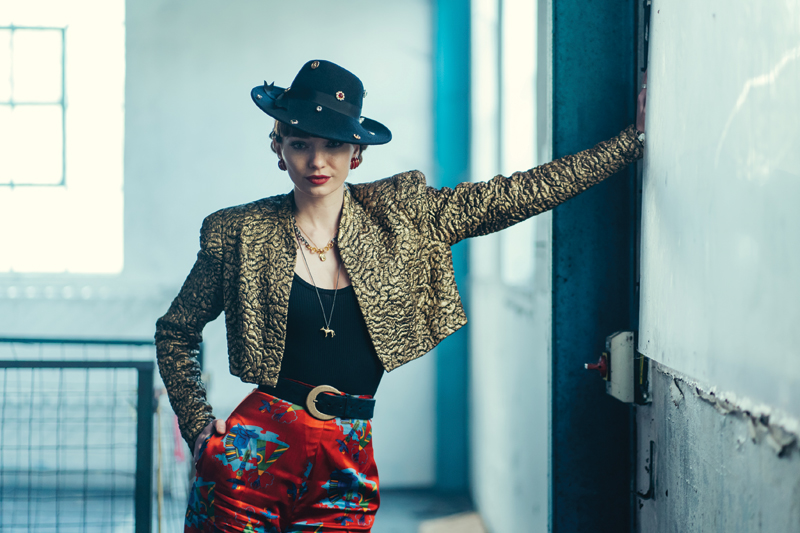When shooting wrapped on Stephen Merchant’s new series, over in the principal costume truck its head of wardrobe shared the sartorial processes behind the dressing of the diverse, star-studded cast.
Words by Amanda Nicholls, photography courtesy of James Pardon/Big Talk/BBC/Four Eyes
Merchant’s long-standing passion project for the BBC follows seven strangers, from different walks of life, forced together to complete a community payback sentence in Bristol. As unlikely new friendships intersect with complicated private lives, the outlaws must unite to protect one of their own from the city’s dangerous criminal gang, the Brook Hill Crew, reminding us that no one is all good or all bad. As well as the different shades of our humanity, the six-part series – the first Merchant has made in his hometown – showcases both beautiful and not so beautiful corners of the city and utilises local talent, including Massive Attack’s Robert Del Naja who has composed the music.
Part crime thriller, part character study – with humour and heart – there are draws for fans of comedy, drama and, of course, Merchant as well as those enamoured by Bristol sights and sounds. The sartorial spectrum of its characters, and how it adds to the storytelling, is reason enough to watch, too.
Fashion queen Lady Gabriella Penrose Howe (played by Eleanor Tomlinson; Poldark, The War of the Worlds) might have us reaching for our phones to try and shop the look,`but there’s more to the costume creation than any visual inspiration. Getting it right is key to the social commentary and the team needed to keep it real while also tasked with elevating the show in line with televisual values.
A character can say a lot with what they’re wearing, so the wardrobe department can help save on precious words in the script – in which case, we wondered, are stereotypes a good starting point in terms of time-saving, or something to guide viewers away from in case they perpetuate certain ideas? Are they a help or a hindrance?
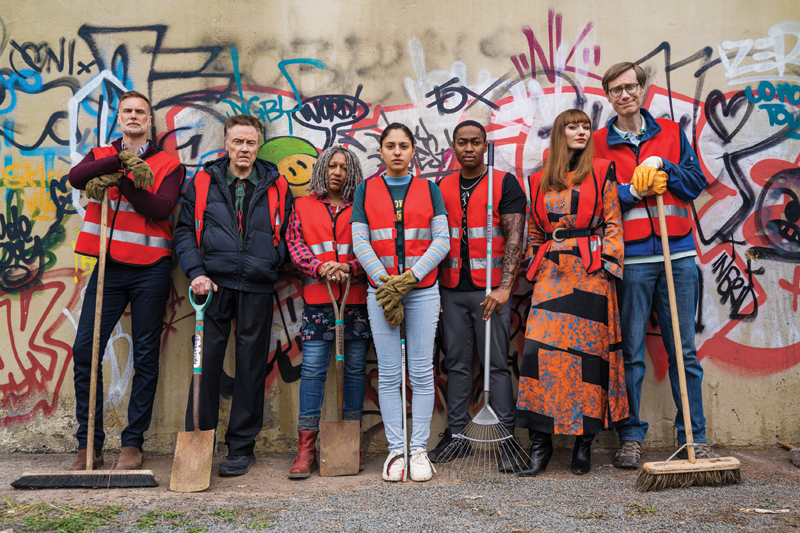
“It’s very dependent on the job and The Outlaws has really shown that to me,” says the series’ Bristol-based costume designer Charlotte Mitchell (Killing Eve, Harlots). “My job, I believe, does start by stereotyping; initially looking at the character on the page and building an image of them. Just because of our own biases, stereotypes are always involved. With The Outlaws it’s about making sure I don’t make clichés. In any job it’s about that but sometimes you do want to because it’s right for the character and part of the humour. This show is part comedy, part drama though, so I’m conscious not to; instead letting the comedy come through in the dialogue.”
It’s been important to give integrity to the class systems and ethnic backgrounds of characters. “Stephen’s been really keen to write that in and make this group become a gang in their own right and unite even though they’re from different backgrounds. As a designer I want to give the characters substance and visual individuality yet cohesion as a group, to tell their stories through my costume choices, help people understand them, and let Stephen lead the comedy.”
Because of her own social demographic and self-confessed lack of knowledge about certain storylines, across her career Mitchell has always started with a look at the actor that’s cast and whether they have come from the same background as their character, or have knowledge of it. “I will always tap into that,” she says. “On this show I have spoken to some of the lead males and said; I’m not a man, for a start, let’s collaborate on this and make it right. I have my opinion on how I want it to look – costume design is painting a picture and making everything look beautiful together – and my overall vision is always there so I will push certain costume journeys. I wanted the leader of the gang to be aspirational and high-end – which in Bristol they probably would be, just maybe not so obviously, but it’s a TV show and we’ve got to heighten things. It’s just a question of how far.”
Said gang leader, Malaki, is played by Charles Babalola. “He’s a young, very attractive, very aspirational Black man and Charles pulls it off brilliantly,” says Mitchell. The script – part penned by American writer, filmmaker and musician Elgin James – initially stated that Malaki would wear a lot of chains around his neck but Mitchell wasn’t sold. “I didn’t think it was British. It felt slightly old fashioned, very stereotypical, more of a musical genre and not who this person is.
“I talked to Charles a lot about keeping an integrity there. Even though he wanted to wear the amazing Gucci two-piece we had – shorts, socks pulled up, sliders – he was worried it was becoming too aspirational. He thought this bloke from the streets would probably wear an average tracksuit – and he would, but for TV purposes we made it a Dover Street Market tracksuit.
“Malaki wears these high-end brands but it’s styled in a way that says; I don’t give a sh*t. It’s quite powerful. There was another big discussion over an Undercover/Off White collaboration – I wanted a long coat so that when he walked he had swagger. From a design point of view, it’s about silhouettes but Charles questioned whether Malaki would wear it. I felt the character would see himself as so above the law that he wouldn’t care; I mean, he drives around in a blingy Range Rover. Just try it, I said; act in it, walk in it, see how you feel. As soon as he did, he completely got it. It has such an over-the-top quality. Compared to all his lieutenants and his runners – all in this urban colour palette – it gives him a different presence and that’s the point: how, from a distance, do characters stand out?”
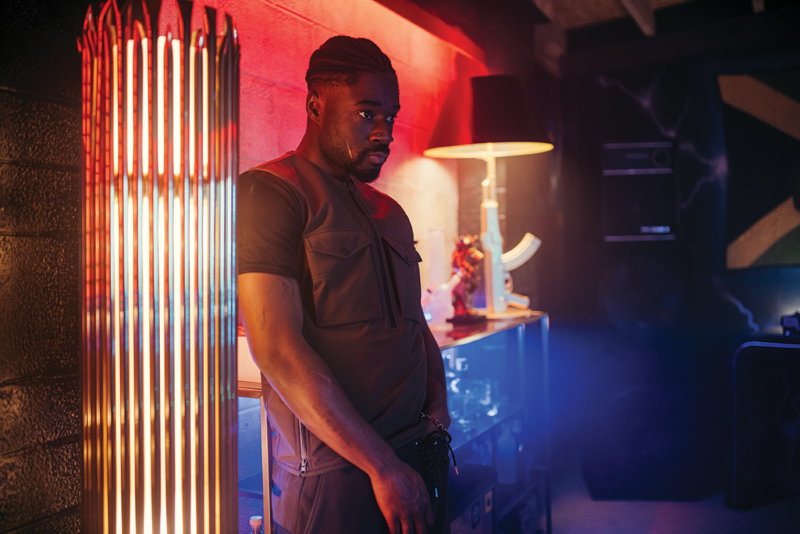
Working with Walken
Without further ado, we talk Walken, his first lead British television role, and how it felt to call him at home from across the pond to discuss his character – ‘inveterate scoundrel’ Frank. What if she’d interrupted his breakfast? Or some impromptu tapdancing around the kitchen à la Weapon of Choice?
“It was terrifying and brilliant,” she beams. “I’ve worked with some amazing actors but he is an icon. It was January and he was still in America – he’s obviously of a certain age and couldn’t come over – and we were in lockdown, working but under strict protocols.”
The two of them discussed their thoughts for Frank, and Walken asked if she could do some drawings. “He was really lovely,” Mitchell recalls. “I told him I don’t do them because they lock me in too much and I prefer the process fluid, so I did moodboards for different tones and styles so he could clearly see which ways we could go.”
There was ‘suave Frank’, using Walken and the stuff he enjoys wearing as a reference. “You try and get into the psychology of someone when you’re building a character so there was American Gigolo, Polo Ralph Lauren and 1980s influence; shoulder pads, oversized macs and coats. He feels comfortable in a bigger ’80s shoulder and it gives him that Christopher Walken swagger. If you look at him on the red carpet even in the early 2000s it’s all wide shoulders and revere collars.”
Then there was ‘Frank 1950s retro’, incorporating bowling shirts, the way Walken wears his own clothes and what suits his frame. “I looked at shows such as The Wire to see how their characters came through then I pushed it with a bit of grunge to see if we could go down that route – as he’s playing an American everything had to have an American feel.”
Naturally standing out among a cast of British characters ranging from gritty gangland to geek and grand celebutante, Walken even considered Mitchell’s ‘country Frank’. “He didn’t want to make it a cliché of America – an English person’s view of what an American person wears – so I was happy to fall back on his vision,” she says. The producers, for their part, stayed out of it – which took the pressure off – and stepped in only to instruct Mitchell not to let a certain piece of headwear happen. “In the fitting Christopher then said he’d really like to wear a bowler hat and I had to remind him it works both ways and a bowler hat is a cliché of what an American person thinks an English person wears. They were worn maybe in the ’50s or ’60s, at the latest, if you were a businessman, but he thought they were the archetype of Britishness!”
Someone may have been watching too much Mary Poppins during lockdown. “Christopher totally understood, though, and it was a real compliment to me that he was enjoying it; if an actor’s bringing ideas to the table they’re enjoying the process. If they’re standing there looking gloomy, I haven’t sold the character. I need to work harder.”
While, usually, Mitchell would have up to a month to make garments after a fitting, Walken flew over and was on camera three days later. It was a challenge, and a joy. “I got to see Christopher Walken becoming Christopher Walken in front of my eyes,” she smiles. “He turns up and he’s just a normal person but then he puts the costume on and even though I had to make him Frank, it also made him Christopher Walken, which is what the creators want; he’s cast for that reason.”
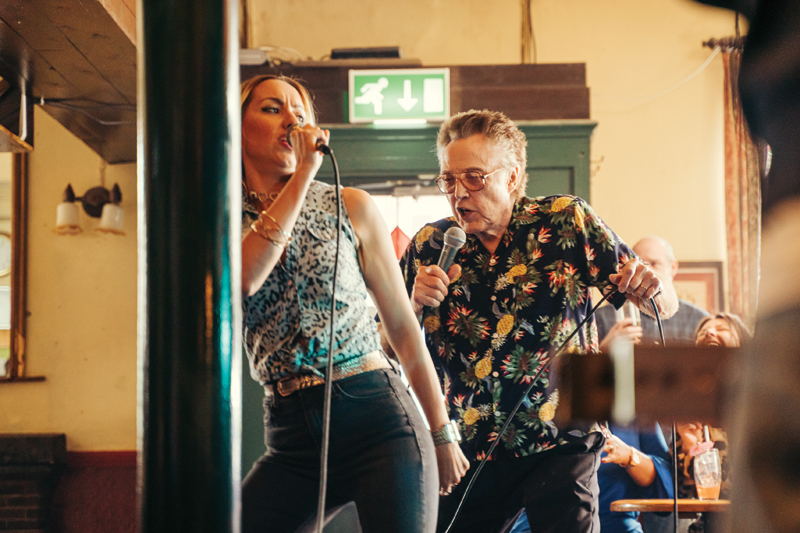
Knocking the stuffing out of a star
Given the time frame and the fact Walken had to have a double, Mitchell had a suit made in advance, but it took some breaking down and battering. “Frank’s just come out of prison, he’s an ex con; Christopher wanted faded glory. I had the inside made thinner so it didn’t look like a fresh padding and was a bit droopy on the shoulders. I put it in the washing machine to try and take it apart from itself then I realised I’d gone a bit too far… He was holding himself a certain way to make himself look droopy so then I had to make it look smarter again!”
While Walken’s character was tricky logistically, it was scariest dressing the boss – Stephen Merchant – in his character’s rather cold colour palette of greys, lilacs and the like. Merchant, who plays Greg – a lonely lawyer who’s coping with divorce, workplace bullying and scary men with knives – had found Mitchell via word of mouth. “Stephen’s great,” she says, “but it was an interesting journey for me as a costume designer as there was nowhere to hide. It was like I needed to prove he’d employed the right person and I had to get it straight away. When I’m doing a fitting with another character I’ve got time to build their confidence but he’s got a lot on his plate and I just wanted to translate his vision and take some pressure off as I would with any director.”
Clare Perkins’ radical activist Myrna was good fun to kit out – “she’s very much stereotypical Bristol and wears a lot of charity shop clothes” – while Darren Boyd’s businessman John, a pillar of the community who is furious at being labelled a criminal, is all “burgundies and warm, old-fashioned jewel tones”. Siblings Esme (Aiyana Goodfellow) and Christian (Gamba Cole) are on the edges of the gang; “They’ve grown up in the same world and Esme’s a schoolgirl of about 15 who’s trying to get into the gang while Christian, who’s doing community service, is trying to keep his kid sister out of it,” says Mitchell. “There’s a fine line with Esme; one moment she can look quite vulnerable, then quite quickly quite sassy. I wanted the same urban palette with a bit of bold colour to distinguish that they’re not part of the gang.”
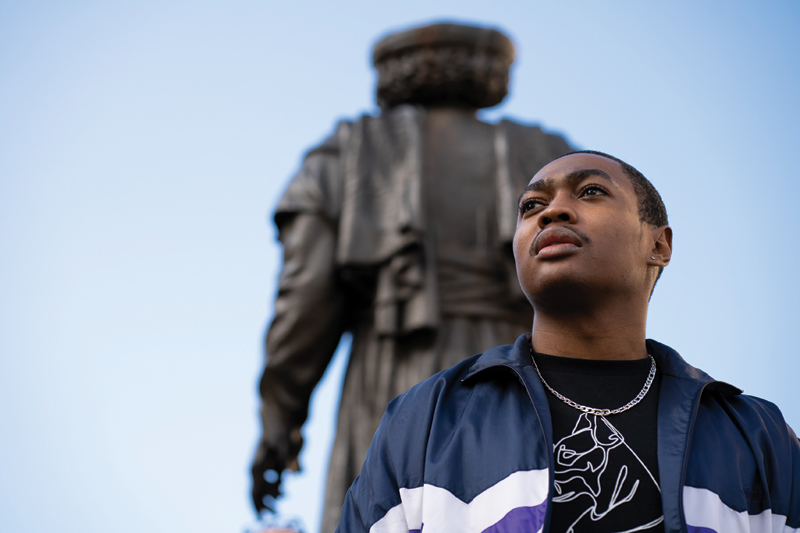
Costume clickbait
The most freedom for Mitchell, in terms of televisual elevation, came via Eleanor Tomlinson. “I had a jewel of a character in Gabby. She is my clothes horse. Unlike Villanelle, who I designed for Killing Eve, and who was provocative with her fashion choices, Gabby uses her strong sense of style to turn heads in a way that makes her feel loved. She is a socialite doing community service because she drink-drives and has a drug addiction. She’s a complex character. From an affluent family, she doesn’t have to do anything; her job is being an Instagram influencer. She wears high-end brands to get clicks and gain admiration she’s lacking in real life.”
Having assembled an idea of the character from the script, when Mitchell looks at who’s cast it often requires a rethink. “Gabby’s trying to put on a music festival but she’s not boho chic. She’s not edgy, which is how she was written at first. It’s Eleanor Tomlinson. She’s more Chelsea Sloane Square than Hoxton hipster. Her character is gay and I’ve made her extremely glamorous. Eleanor is statuesque, she’s beautiful, she suits a strong outline, she’s going to be glamorous, so I pushed down that route. We’ve got Moschino; a Stella McCartney jumpsuit; original ’70s Vampires Wife; Alice and Olivia; Isabelle Marant; Yves Saint Laurent; LF Markey denim for a bit of the everyday, which I had dyed pink to give it a little bit more pizazz; Shrimps – I always use a bit of vintage. I went to Bristol vintage shops and used a sourcer to help me find jewellery as well as the most incredible ’40s jacket. I used Grace and Mabel; one of my favourites; Kimono Kimono down Park Row. I try to be as sustainable as possible so where I can I also hire from Bristol Costume Services.”
Meanwhile, Rhianne Barreto (Honour, Hanna) plays Rani, a gifted but rebellious maths student who has been hot-housed by her loving but controlling parents. “She’s a studious girl but a prolific shoplifter,” says Mitchell. “It’s a way for her to get attention because her parents are pushing her in a certain direction. She’s got a scholarship to Oxford University, and it’s a cry for help. She falls for this chap at community service – we don’t know if he’s good or bad in series one – and her style progresses because of that influence.”
Mitchell pictured where the characters would shop so she could break it down for the show’s costume budget. “Rani’s got low income so might shop at New Look or River Island where you know a whole outfit is going to cost you £100 to £150; I built her character with what was in the shops, screengrabs of people on the street and Pinterest, to create silhouettes and colour palettes. Gabby, on the other hand, might need £3,000, £4,000 and above per outfit. But most of these characters wouldn’t have clothes that are brand new so 40% of the wardrobe is second hand – to make it real, and more sustainable. On a period drama job we’d have a workroom but on a show like this, it’s all about how people wear clothes.”
The Outlaws airs this autumn on BBC One and BBC iPlayer: bbc.co.uk

